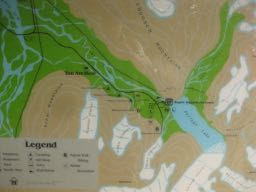The Cappadocia region is shown on the map in the previous post.

I used the word ‘old’ just now. Let’s clarify that.
‘Göreme is a unique town located in the Cappadocia region of Turkey. It is known for its fairy chimneys, rock-cut churches, and cave dwellings. The town’s history goes back to ancient times when the Hittites were the first to inhabit the area. Later, Göreme became an important center of Christianity, and many churches were carved out of the soft volcanic tuff rock. In the 4th century, Göreme became a monastic settlement for hermits who lived in the caves and practiced asceticism.”
What does “ancient times” mean?
The Hittite Empire was an ancient civilization in Anatolia from the late 17th century BC to the end of the 12th century BC. The Hittites provided significant examples of stone masonry. Stone reliefs are commonly found on monumental structures, such as city walls and gates. If you read that paragraph and pulled 4th century out to determine ‘old’, that’s perfectly reasonable. But go back to “ancient times when the Hittites were the first . . .” (From a Koç University site)
In Turkish, pasta means cake. But it was in English and it sure looks like pasta on the plate. I asked J, “Does it mean pasta in English or Turkish? Looks like English.” And it was a pasta place, but I was hoping to have lentil soup, which is delicious in Turkey. I asked the young lady if they had soup. She said no, but to wait a second.
The next morning at 5:55am I was supposed to be ready for a balloon ride. Cappadocia is known for balloons. I’d decided that everyone should probably ride a balloon at least once and that Cappadocia was one of the best places to do that. J didn’t agree with the first
They said there were 160 balloons aloft. It was magical. I bonded with a French Canadian couple as we lifted up in morning twilight.
It was chilly - about 35˚F (1.6˚C). Colder than it was that day in Anchorage. I had several layers on, and fortunately I was relatively close to the propane burner.
Soon we were up and drifting over the many rock formations that Cappadocia is famous for.
The ride was just under an hour and I got back in time for the hotel’s buffet breakfast that comes with the room. Maybe I’ll do a post on the breakfasts.
Then we were picked up for the ‘Red Tour”. The next day we did the “Green Tour”. Cappadocia’s tourist industry is highly organized. One tour goes to the north, the other to the south. Big white VW busses (not vans, but busses that hold 20 people or so) come up the narrow streets picking up their passengers from their hotels. Where we were the street was very narrow and one way, and if a passenger wasn’t out waiting and the guide had to go looking for them, it would lead to seven or more vehicles blocked.
I’m running out of steam here, so I’m going to focus just on the rock formations parts of the tours and combine the two. I wanted the people in this picture so you’d get a sense of the size of these formations. People, over the millennia, have carved out spaces inside the formations and lived in them, had churches in them.
“Geologically, Cappadocia is an ancient region that has been shaped by millions of years of geological activity, including volcanic eruptions, tectonic movements, and erosion. The landscape is characterized by soft, easily erodible volcanic tuff, which has been sculpted into a variety of shapes by the forces of wind and water.
Over the centuries, humans have also played a role in shaping the landscape of Cappadocia. The region has a rich history of human settlement, dating back to the Hittites in the 2nd millennium BCE, and later occupied by the Persians, Greeks, Romans, and Byzantines. The people of Cappadocia have also left their mark on the landscape, carving homes, churches, and other structures into the soft volcanic rock.” (From Geology Science)
















































